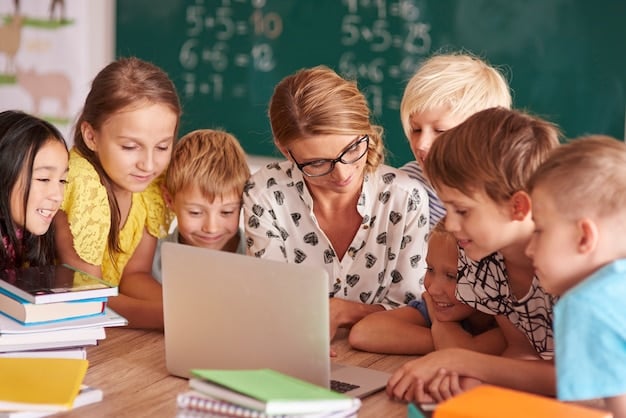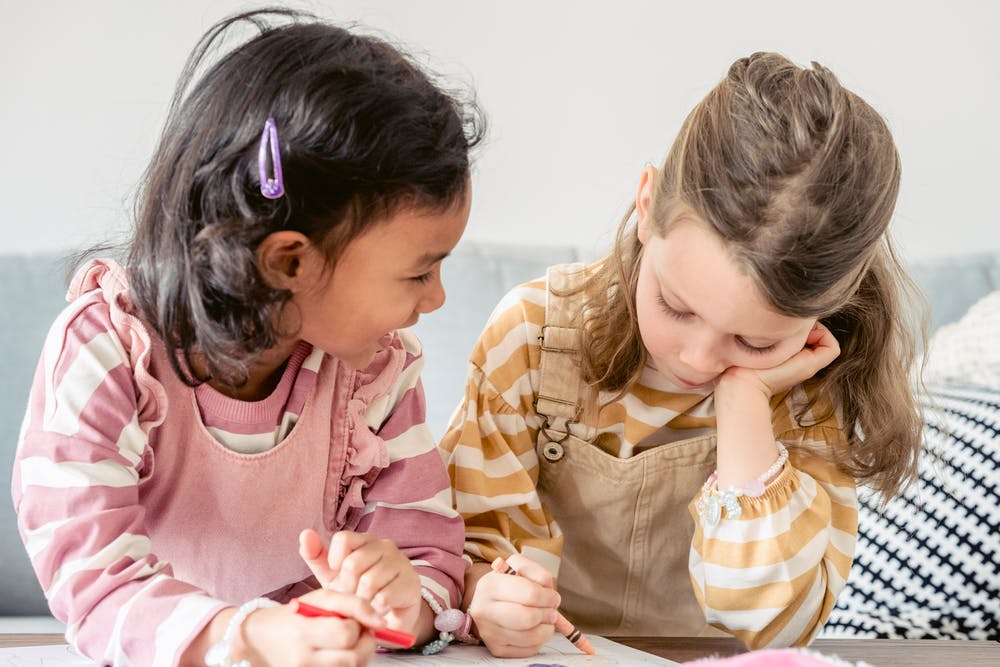From Chaos to Calm: New Year Hacks to Streamline Routines in Early Childhood Classrooms
 The #classroom, often a bustling hub of activity, can quickly become overwhelming without the right strategies in place. However, with intentional planning and innovative approaches, #teachers can transform their #classrooms from chaotic spaces into organized sanctuaries of learning.
The #classroom, often a bustling hub of activity, can quickly become overwhelming without the right strategies in place. However, with intentional planning and innovative approaches, #teachers can transform their #classrooms from chaotic spaces into organized sanctuaries of learning.
Streamlining Routines in Early Childhood Classrooms
To effectively streamline routines in #early-childhood classrooms, ChildCareEd is sharing the following strategies:
-
Establish Consistent Daily Schedules:
- Create a visual schedule that outlines daily activities, helping children understand what to expect and reducing anxiety around transitions.
- Use timers or visual cues to signal transitions between activities, allowing children to prepare #mentally for what comes next.
-
Incorporate Predictable Routines:
- Develop routines for common activities such as snack time, circle time, and clean-up. Consistency helps children feel secure and fosters independence.
- Introduce simple songs or chants to signal the start and end of activities, making transitions smoother and more engaging.
-
Utilize Clear Communication:
- Communicate expectations clearly to children using simple #language. Reinforce instructions with visual aids or demonstrations to enhance understanding.
- Encourage children to #express their feelings about transitions, allowing them to voice any concerns and feel heard.
-
Create a Calm Environment:
- Designate specific areas in the classroom for different activities (e.g., quiet reading corner, active #play area) to minimize distractions and chaos.
- Use calming colors and soft lighting to create a soothing atmosphere that promotes focus and relaxation.
-
Engage Families in the Process:
- Share your classroom routines with families and encourage them to reinforce similar structures at #home. This consistency can help children adapt more easily to transitions.
- Host workshops or informational sessions for #parents to discuss the importance of routines and how they can support their child's learning.
-
Be Flexible and Adaptable:
- While routines are important, be prepared to adjust them based on the needs of the children. Flexibility can help accommodate unexpected changes or challenges.
- Regularly assess the effectiveness of your routines and make necessary adjustments to improve the overall classroom experience.
-
Incorporate Mindfulness Practices:
- Integrate short mindfulness activities, such as deep breathing or guided imagery, to help children center themselves before transitions.
- Use calming music or nature sounds during quiet times to create a peaceful atmosphere conducive to learning.
References
- https://www.childcareed.com/a/new-year-fewer-tantrums-tips-for-building-strong-parent- #educator-partnerships-in-2025.html
- https://www.theempowerededucatoronline.com/2021/08/ #stress-free-childcare- #sleep-rest-routines.html/
Creating Calm Environments in Classrooms
Here are some practical strategies to create calm environments in classrooms:
-
Establish Clear Routines: Consistency is vital in #early-childhood-education. Develop a daily schedule that outlines activities and transitions. This predictability helps children feel secure, reducing anxiety and allowing them to focus on learning.
-
Create a Welcoming Space: Design the classroom layout to be inviting and comfortable. Utilize soft colors, natural light, and cozy reading corners to make the environment feel #safe and nurturing. Incorporating plants or artwork created by the children can personalize the space and enhance its warmth.
-
Incorporate Calming Tools: Provide #sensory tools such as stress balls, fidget toys, or calming jars. These resources can help children self-regulate their emotions and maintain focus during lessons, especially during moments of heightened energy or stress.
-
Use Soft Music or Nature Sounds: Background music or nature sounds can create a soothing atmosphere. Consider playing gentle melodies during quiet activities or transitions to help children relax and ease into their tasks.
-
Mindfulness Practices: Introduce short mindfulness exercises, such as deep breathing or guided imagery, to help children center themselves. These practices can be integrated into the daily routine, promoting emotional regulation and enhancing overall well-being.
-
Organized Learning Areas: Clearly define different learning zones within the classroom, such as art, reading, and #play-areas. Ensure that materials are organized and accessible, minimizing clutter and distractions, which allows children to engage more fully in their activities.
-
Limit Visual and Auditory Distractions: Reduce noise levels and visual clutter by using soft furnishings and organizing materials. This can help children concentrate better and feel less overwhelmed, creating a more conducive learning environment.
-
Encourage Positive Interactions: Foster a #culture of kindness and respect among #students. Use positive reinforcement to acknowledge cooperative behavior, contributing to a harmonious #classroom-environment. Implement group activities that promote
References
Effective Time Management for Teachers
Here are some enhanced time management techniques that can help teachers regain control over their schedules:
-
Prioritize Tasks: Begin each week by identifying the most critical tasks that need to be accomplished. Use a priority matrix to categorize tasks based on urgency and importance, ensuring that you focus on what truly matters.
-
Set Clear Goals: Establish specific, measurable, achievable, relevant, and time-bound (SMART) goals for both your teaching and personal #development. This clarity will help you stay on track and measure your progress effectively.
-
Create a Structured Schedule: Develop a daily or weekly schedule that allocates time blocks for lesson planning, grading, and administrative tasks. Adhering to this schedule as closely as possible will maintain consistency and reduce last-minute stress.
-
Utilize Technology: Leverage digital tools and apps designed for #educators to streamline lesson planning, communication, and grading. Tools like Google Classroom, Trello, or Evernote can significantly enhance your organization and efficiency.
-
Delegate Responsibilities: Don’t hesitate to delegate tasks to teaching assistants or involve students in classroom responsibilities. This not only lightens your load but also fosters a sense of community and responsibility among students.
-
Limit Distractions: Identify common distractions in your work environment and take proactive steps to minimize them. This could include setting specific times to check emails or silencing notifications during focused work periods.
-
Reflect and Adjust: At the end of each week, take time to reflect on what worked well and what didn’t. Adjust your strategies accordingly to continuously improve your time management skills.
-
Incorporate Breaks: Schedule short breaks throughout your day to recharge. This practice can enhance focus and productivity, allowing you to return to tasks with renewed energy.
-
Plan for the Unexpected: Build flexibility into your schedule to accommodate unforeseen events or emergencies. This adaptability can help reduce stress when unexpected situations arise.
-
Engage in Professional Development: Regularly seek out workshops or resources on time management and organizational skills. Continuous learning can provide new insights and techniques to improve your efficiency.
References
- Health, safety and nutrition
- Curriculum
- Professionalism
- Child development
- Community
- Infant/ Toddler
- Preschool
- School age
- Family Child Care
- Health and Safety
- Content Areas
- Social/Emotional
- Families
- Child Development
- Business Practices
- Mental Health
- Diversity, Equity, Inclusion
- Website Articles
- Health, safety and nutrition
- Curriculum and Environment
- Child development
- Community and Family
- Montessori
- CDA
- Child Guidance
- A Watchful Eye: Supervision in Early Childhood
- Conduct Disorders in Early Childhood
- Developmental Screening in Early Childhood
- Early Childhood Education
- Early Childhood Program Administration
- FAS in Early Childhood
- Language Development in Early Childhood
- Math Foundations in Early Childhood
- Mental Health in Early Childhood
- Mind's Medicine: Music in Early Childhood
- From Chaos to Calm: New Year Hacks to Streamline Routines in Early Childhood Classrooms
- Your Future in Early Childhood Education: The New Jersey CDA and State-Approved Trainings
- Exploring the Cognitive Benefits of Movement in Early Childhood Classrooms
- The Importance of Trauma-Informed Care in Early Childhood Classrooms
- ChildCareED Is Ushering A New Era of Accessibility and Innovation in Early Childhood Education
- Many Languages, One Classroom: How to Celebrate and Support Multilingual Learners in Early Childhood
- From Workshop to Classroom: How a CDA Credential Shapes the Future of Early Childhood Educators
- Benefits of Outdoor Classrooms in Early Childhood Education
- Managing Behaviors in the Early Childhood Education Classroom
- Welcome to New York: Early Childhood Education
- Plan Like a Pro: Creating Meaningful Lessons in Your Early Childhood Classroom
- NYC Roadmap: Your Early Childhood Education Journey in the Heart of New York City
- How CDA Council's Early Educators Leadership Conference is Shaping the Future of Early Childhood Education
- 🌈From Chaos to Calm: How to Create a Peaceful, Happy Classroom
- Networking Resources for Early Childhood Educators in New York
- New Year, New Skills: Why Childcare Certifications Should Be your focus in 2025
- Conflict in Early Childhood Education Classrooms: Understanding, Managing, and Learning
- Which New Hampshire Bundle Makes Your Early Childhood Heart Sing?
- 🌟Will You Be My Friend? Celebrating National Friendship Day in Early Childhood Classrooms
- The Benefits of Early Childhood Education: Why Starting Early Matters


